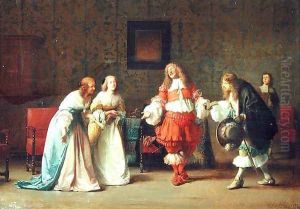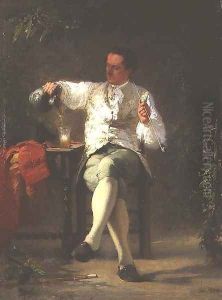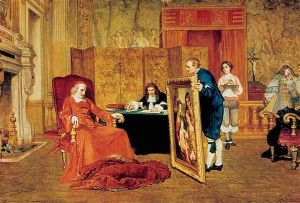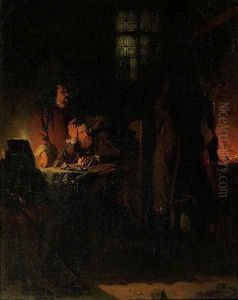Jean Hegesippe Vetter Paintings
Jean Hégésippe Vetter was a French painter, born in 1820 in Paris, France. He was a genre painter, portraitist, and a creator of historical scenes. His work was very much influenced by the Romantic movement of the 19th century, which emphasized emotion and individualism as well as glorification of the past and nature.
Vetter studied under François-Édouard Picot and Léon Cogniet, two notable French painters of their time. He first exhibited at the Paris Salon in 1848, a prestigious event where he would continue to present his work throughout his career. Vetter's paintings often depicted scenes from the French Renaissance or the Middle Ages, replete with rich detail and a focus on the human figure, which he rendered with a sense of drama and narrative depth.
His painting 'The Last Supper', exhibited at the Salon of 1863, is one of his most famous works and showcases his interest in historical and religious subjects. Another significant work is 'The Death of Rizzio,' which displays his skill in creating dynamic and emotionally charged scenes from history.
Throughout his career, Vetter was known for his ability to capture the essence of his subjects, whether they were grand historical figures or ordinary people. His portraits are particularly noted for their lifelike quality and psychological depth. Despite his talent and the recognition he received during his lifetime, Vetter did not achieve the same level of enduring fame as some of his contemporaries.
Jean Hégésippe Vetter passed away in 1909, leaving behind a legacy of work that continues to be appreciated by art historians and collectors for its embodiment of 19th-century Romantic sensibilities.



